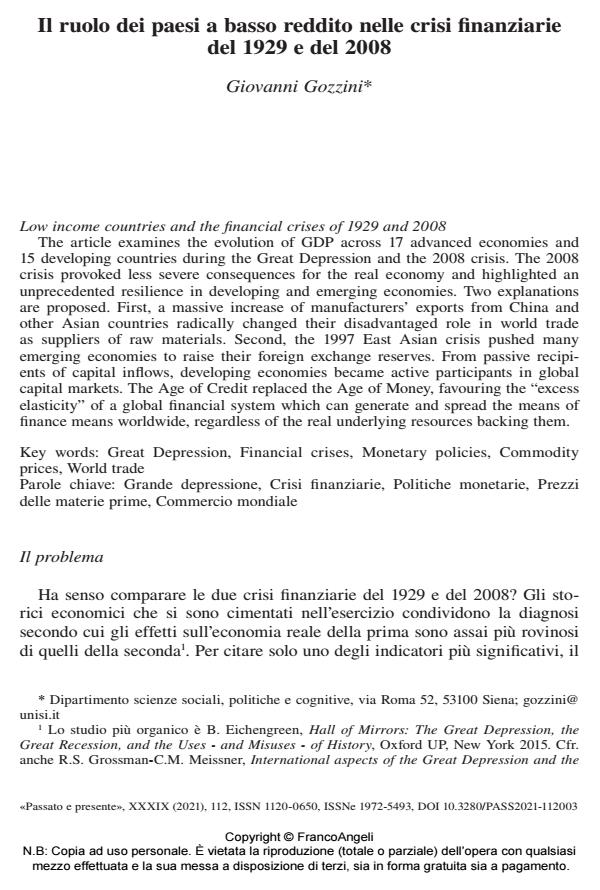Low income countries and the financial crises of 1929 and 2008
Journal title PASSATO E PRESENTE
Author/s Giovanni Gozzini
Publishing Year 2021 Issue 2021/112
Language Italian Pages 23 P. 19-41 File size 227 KB
DOI 10.3280/PASS2021-112003
DOI is like a bar code for intellectual property: to have more infomation
click here
Below, you can see the article first page
If you want to buy this article in PDF format, you can do it, following the instructions to buy download credits

FrancoAngeli is member of Publishers International Linking Association, Inc (PILA), a not-for-profit association which run the CrossRef service enabling links to and from online scholarly content.
The article examines the evolution of GDP across 17 advanced economies and 15 developing countries during the Great Depression and the 2008 crisis. The 2008 crisis provoked less severe consequences for the real economy and highlighted an unprecedented resilience in developing and emerging economies. Two explanations are proposed. First, a massive increase of manufacturers’ exports from China and other Asian countries radically changed their disadvantaged role in world trade as suppliers of raw materials. Second, the 1997 East Asian crisis pushed many emerging economies to raise their foreign exchange reserves. From passive recipients of capital inflows, developing economies became active participants in global capital markets. The Age of Credit replaced the Age of Money, favouring the "excess elasticity" of a global financial system which can generate and spread the means of finance means worldwide, regardless of the real underlying resources backing them.
Keywords: Great Depression, Financial crises, Monetary policies, Commodity prices, World trade
Giovanni Gozzini, Il ruolo dei paesi a basso reddito nelle crisi finanziarie del 1929 e del 2008 in "PASSATO E PRESENTE" 112/2021, pp 19-41, DOI: 10.3280/PASS2021-112003